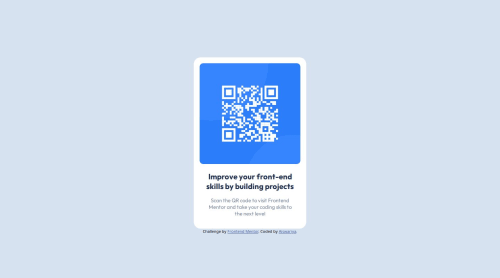mobile first solution using HTML5 and CSS properties

Solution retrospective
The component is fully responsive and looks great on both mobile and desktop devices. Ensuring a seamless user experience across different screen sizes was a key goal, and I believe I achieved that effectively. I focused on writing clean, semantic HTML and well-organized CSS. Implementing Flexbox for layout made the alignment and spacing of elements consistent. This was particularly useful for centering the content both vertically and horizontally. For my other projects, I would explore using CSS Grid alongside Flexbox.
What challenges did you encounter, and how did you overcome them?Maintaining consistent spacing and alignment between elements within the card, especially as the viewport size changed, was challenging. I used CSS custom properties (variables) to define consistent spacing values throughout the project. This allowed me to easily adjust padding and margin values and ensure uniformity. Flexbox also helped maintain consistent spacing by distributing space evenly among the elements.
What specific areas of your project would you like help with?I used pure CSS for styling this project, but I'm curious about the benefits of using CSS frameworks like Bootstrap or Tailwind CSS. How could incorporating a framework have improved the development process or the final design? Are there specific scenarios where one framework would be more advantageous than another for a project like this?
Please log in to post a comment
Log in with GitHubCommunity feedback
- @RSGames2019
Estou no inicio como você, então não sei o dizer sobre suas duvidas, mas sei que juntos podemos superar todos os nossos desafios.
Join our Discord community
Join thousands of Frontend Mentor community members taking the challenges, sharing resources, helping each other, and chatting about all things front-end!
Join our Discord